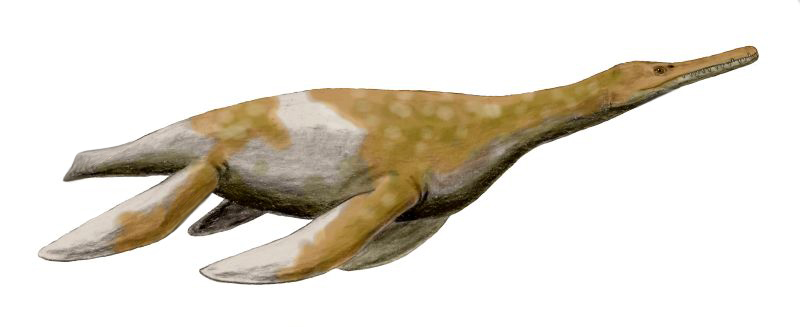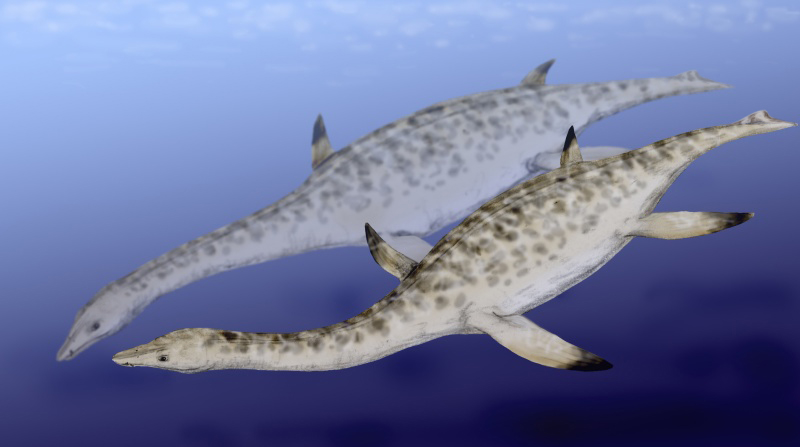|
Leptocleidia
Leptocleidia is a clade of plesiosauroids. The group was erected in 2007 as Leptocleidoidea. Although established as a clade, the name Leptocleidoidea implies that it is a superfamily. Leptocleidoidea is placed within the superfamily Plesiosauroidea, so it was renamed Leptocleidia by Hilary F. Ketchum and Roger B. J. Benson (2010) to avoid confusion with ranks. Leptocleidia is a node-based taxon which was defined by Ketchum and Benson as "'' Leptocleidus superstes'', ''Polycotylus latipinnis ''Polycotylus'' is a genus of plesiosaur within the family Polycotylidae. The type species is ''P. latippinis'' and was named by American paleontologist Edward Drinker Cope in 1869. Eleven other species have been identified. The name means 'muc ...'', their most recent common ancestor and all of its descendants". References Plesiosaurs Fossil taxa described in 2010 {{plesiosaur-stub ... [...More Info...] [...Related Items...] OR: [Wikipedia] [Google] [Baidu] |
Polycotylidae
Polycotylidae is a family of plesiosaurs from the Cretaceous, a sister group to Leptocleididae. Polycotylids first appeared during the Albian stage of the Early Cretaceous, before becoming abundant and widespread during the early Late Cretaceous. Several species survived into the final stage of the Cretaceous, the Maastrichtian. With their short necks and large elongated heads, they resemble the pliosaurs, but closer phylogenetic studies indicate that they share many common features with the Leptocleididae and Elasmosauridae. They have been found worldwide, with specimens reported from New Zealand, Australia, Japan, Morocco, the US, Canada, Eastern Europe, and South America. Phylogeny Cladogram A cladogram (from Greek ''clados'' "branch" and ''gramma'' "character") is a diagram used in cladistics to show relations among organisms. A cladogram is not, however, an evolutionary tree because it does not show how ancestors are related to d ... after Albright, Gillette and Tit ... [...More Info...] [...Related Items...] OR: [Wikipedia] [Google] [Baidu] |
Plesiosauroid
Plesiosauroidea (; Greek: 'near, close to' and 'lizard') is an extinct clade of carnivorous marine reptiles. They have the snake-like longest neck to body ratio of any reptile. Plesiosauroids are known from the Jurassic and Cretaceous periods. After their discovery, some plesiosauroids were said to have resembled "a snake threaded through the shell of a turtle", although they had no shell. Plesiosauroidea appeared at the Early Jurassic Period (late Sinemurian stage) and thrived until the K-Pg extinction, at the end of the Cretaceous Period. The oldest confirmed plesiosauroid is ''Plesiosaurus'' itself, as all younger taxa were recently found to be pliosauroids. While they were Mesozoic diapsid reptiles that lived at the same time as dinosaurs, they did not belong to the latter. Gastroliths are frequently found associated with plesiosaurs. History of discovery The first complete plesiosauroid skeletons were found in England by Mary Anning, in the early 19th century, and wer ... [...More Info...] [...Related Items...] OR: [Wikipedia] [Google] [Baidu] |
Plesiosauroidea
Plesiosauroidea (; Greek: 'near, close to' and 'lizard') is an extinct clade of carnivorous marine reptiles. They have the snake-like longest neck to body ratio of any reptile. Plesiosauroids are known from the Jurassic and Cretaceous periods. After their discovery, some plesiosauroids were said to have resembled "a snake threaded through the shell of a turtle", although they had no shell. Plesiosauroidea appeared at the Early Jurassic Period (late Sinemurian stage) and thrived until the K-Pg extinction, at the end of the Cretaceous Period. The oldest confirmed plesiosauroid is ''Plesiosaurus'' itself, as all younger taxa were recently found to be pliosauroids. While they were Mesozoic diapsid reptiles that lived at the same time as dinosaurs, they did not belong to the latter. Gastroliths are frequently found associated with plesiosaurs. History of discovery The first complete plesiosauroid skeletons were found in England by Mary Anning, in the early 19th century, and wer ... [...More Info...] [...Related Items...] OR: [Wikipedia] [Google] [Baidu] |
Leptocleidus Superstes
''Leptocleidus'' is an extinct genus of plesiosaur, belonging to the family Leptocleididae.Smith AS, Dyke GJ. 2008. The skull of the giant predatory pliosaur ''Rhomaleosaurus cramptoni'': implications for plesiosaur phylogenetics. ''Naturwissenschaften'' e-published 2008. It was a small plesiosaur, measuring only up to . Discovery In short, the term ''Leptocleidus'' means "slender clavicle". It comes from a merge of the Greek words ''λεπτοσ'', meaning "slender" and ''κλειδ'' (also spelled ''κλεισ'') meaning clavicle. ''Leptocleidus'' is known from the following sediments: *''L. capensis'' is known from the Sundays River Formation (Valanginian age), Cape Province, South Africa. *''L. clemai'' found near Kalbarri in the Carnarvon Basin (Hauterivian-Barremian age) Western Australia. *''L. superstes'' is known from the Upper Weald Clay (Barremian age), Sussex, England. A specimen from the Vectis Formation (lower Aptian age), Isle of Wight, found in 1995 and see ... [...More Info...] [...Related Items...] OR: [Wikipedia] [Google] [Baidu] |
Polycotylus Latipinnis
''Polycotylus'' is a genus of plesiosaur within the family Polycotylidae. The type species is ''P. latippinis'' and was named by American paleontologist Edward Drinker Cope in 1869. Eleven other species have been identified. The name means 'much-cupped vertebrae', referring to the shape of the vertebrae. It lived in the Western Interior Seaway of North America toward the end of the Cretaceous. One fossil preserves an adult with a single large fetus inside of it, indicating that ''Polycotylus'' gave live birth, an unusual adaptation among reptiles. History Edward Drinker Cope named ''Polycotylus'' from the Niobrara Formation in Kansas in 1869. The holotype bones from which he based his description were fragmentary, representing only a small portion of the skeleton. A more complete skeleton was later found in Kansas and was described in 1906. A nearly complete skeleton was found in 1949 from the Mooreville Chalk Formation in Alabama, but was not described until 2002. A new specie ... [...More Info...] [...Related Items...] OR: [Wikipedia] [Google] [Baidu] |
Plesiosaurs
The Plesiosauria (; Greek: πλησίος, ''plesios'', meaning "near to" and ''sauros'', meaning "lizard") or plesiosaurs are an order or clade of extinct Mesozoic marine reptiles, belonging to the Sauropterygia. Plesiosaurs first appeared in the latest Triassic Period, possibly in the Rhaetian stage, about 203 million years ago. They became especially common during the Jurassic Period, thriving until their disappearance due to the Cretaceous–Paleogene extinction event at the end of the Cretaceous Period, about 66 million years ago. They had a worldwide oceanic distribution, and some species at least partly inhabited freshwater environments. Plesiosaurs were among the first fossil reptiles discovered. In the beginning of the nineteenth century, scientists realised how distinctive their build was and they were named as a separate order in 1835. The first plesiosaurian genus, the eponymous ''Plesiosaurus'', was named in 1821. Since then, more than a hundred valid s ... [...More Info...] [...Related Items...] OR: [Wikipedia] [Google] [Baidu] |
Cretaceous
The Cretaceous ( ) is a geological period that lasted from about 145 to 66 million years ago (Mya). It is the third and final period of the Mesozoic Era, as well as the longest. At around 79 million years, it is the longest geological period of the entire Phanerozoic. The name is derived from the Latin ''creta'', "chalk", which is abundant in the latter half of the period. It is usually abbreviated K, for its German translation ''Kreide''. The Cretaceous was a period with a relatively warm climate, resulting in high eustatic sea levels that created numerous shallow inland seas. These oceans and seas were populated with now- extinct marine reptiles, ammonites, and rudists, while dinosaurs continued to dominate on land. The world was ice free, and forests extended to the poles. During this time, new groups of mammals and birds appeared. During the Early Cretaceous, flowering plants appeared and began to rapidly diversify, becoming the dominant group of plants across the Earth b ... [...More Info...] [...Related Items...] OR: [Wikipedia] [Google] [Baidu] |
Nichollssaura
''Nichollssaura'' is an extinct genus of leptocleidid plesiosaur from the Early Cretaceous Boreal Sea of North America. The type species is ''N. borealis'', found in the early Albian age Clearwater Formation near Fort McMurray, Alberta, Canada. ''Nichollssaura'' was a small plesiosaur, reaching in length and in body mass. It fills an approximate 40-million-year gap in the fossil record of North American plesiosaurs. The type specimen was discovered in one of Syncrude Canada Ltd.'s open-pit oilsand mines near Fort McMurray, Alberta, in 1994. The fossil is on display at the Royal Tyrrell Museum of Palaeontology, missing only the left forelimb and scapula, lost when the specimen was discovered accidentally by 100-ton electric shovel operators Greg Fisher and Lorne Cundal. Etymology The fossil, named after paleontological curator Dr. Betsy Nicholls, originally was named ''Nichollsia borealis'' but ''Nichollsia'' was already in use (preoccupied) by a genus of isopods. T ... [...More Info...] [...Related Items...] OR: [Wikipedia] [Google] [Baidu] |
2010 In Paleontology
Plants Angiosperms Molluscs Newly named bivalves Arthropods Fishes Amphibians Newly named amphibians Basal reptiles Newly named basal reptiles Ichthyopterygians Newly named ichthyopterygians Lepidosauromorphs Newly named plesiosaurs Newly named basal lepidosaurs Newly named lizards Newly named snakes Turtles Newly named turtles Archosauromorphs Newly named basal archosauromorphs Archosaurs Synapsids Newly named non-mammalian synapsids Mammals Other animals Footnotes Complete author list As science becomes more collaborative, papers with large numbers of authors are becoming more common. To prevent the deformation of the tables, these footnotes list the contributors to papers that erect new genera and have many authors. References {{Reflist, 2 ... [...More Info...] [...Related Items...] OR: [Wikipedia] [Google] [Baidu] |
Leptocleididae
Leptocleididae is a family of small-sized plesiosaurs that lived during the Early Cretaceous period (early Berriasian to early Albian stage). They had small bodies with small heads and short necks. ''Leptocleidus'' and '' Umoonasaurus'' had round bodies and triangle-shaped heads. Leptocleidids have been found in what were shallow nearshore, freshwater and brackish habitats. Hilary F. Ketchum and Roger B. J. Benson (2010), transferred ''Brancasaurus'', ''Kaiwhekea'', '' Nichollssaura'' and ''Thililua ''Thililua'' is a genus of polycotylid plesiosaur, containing one species, ''T. longicollis''. Discovery The name ''Thililua'' is derived from that of an ancient aquatic god from local Berber mythology; ''longicollis'' refers to the animal's ...'' to this family. However, Ketchum and Benson (2011) reassigned ''Kaiwhekea'' and ''Thililua'' to their original positions, as an elasmosaurid and a polycotylid, respectively. Phylogeny Cladogram based on Ketchum and Benson (2011): ... [...More Info...] [...Related Items...] OR: [Wikipedia] [Google] [Baidu] |
Thililua Longicollis
''Thililua'' is a genus of polycotylid plesiosaur, containing one species, ''T. longicollis''. Discovery The name ''Thililua'' is derived from that of an ancient aquatic god from local Berber mythology; ''longicollis'' refers to the animal's long neck. ''Thililua'' has been found in Late Cretaceous (early Turonian) rocks in the High Atlas mountains of Morocco in north Africa. ''Thililua'' is the first Polycotylid plesiosaur discovered in Africa, and also the first discovered that lived at a subtropical latitude. In 2010, ''Thililua'' was transferred to Leptocleididae as a sister taxon to ''Nichollssaura''. Description The type specimen of ''T. longicollis'', which was described in 2003, consists of an almost complete skull and lower jaw, articulated with 37 vertebrae. Of these vertebrae, 30 were cervical (neck) vertebrae, which is an unusually high number compared to other Polycotylids, such as ''Dolichorhynchops'', which had only 19 neck vertebrae, and ''Polycotylus' ... [...More Info...] [...Related Items...] OR: [Wikipedia] [Google] [Baidu] |
Clade
A clade (), also known as a monophyletic group or natural group, is a group of organisms that are monophyletic – that is, composed of a common ancestor and all its lineal descendants – on a phylogenetic tree. Rather than the English term, the equivalent Latin term ''cladus'' (plural ''cladi'') is often used in taxonomical literature. The common ancestor may be an individual, a population, or a species (extinct or extant). Clades are nested, one in another, as each branch in turn splits into smaller branches. These splits reflect evolutionary history as populations diverged and evolved independently. Clades are termed monophyletic (Greek: "one clan") groups. Over the last few decades, the cladistic approach has revolutionized biological classification and revealed surprising evolutionary relationships among organisms. Increasingly, taxonomists try to avoid naming taxa that are not clades; that is, taxa that are not monophyletic. Some of the relationships between organisms ... [...More Info...] [...Related Items...] OR: [Wikipedia] [Google] [Baidu] |









